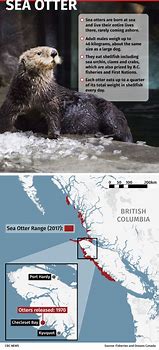In the rugged wilderness of Coastal Alaska, a young wolf named No. 202006 met a tragic fate at just four years old. Wildlife research biologist Gretchen Roffler recalls,
“We spent quite a bit of time trying to figure out the cause of her death by doing a necropsy and different analyses of tissues.”
What they discovered was shocking – unprecedented levels of mercury in the wolf’s organs.
Partnering with Dr. Ben Barst, an expert in ecotoxicology, the team delved into understanding how this toxic metal found its way into the wolves’ systems. Dr. Barst explains,
“Mercury is a naturally occurring element that humans release from the Earth’s crust through various activities like coal combustion and small-scale gold mining.”
The metal’s ability to transform into methyl mercury in aquatic environments poses a significant threat to predators like wolves that feed on marine life such as sea otters.
A recent study published in the journal Science of The Total Environment revealed startling findings about wolves consuming sea otters compared to those feeding on land animals like deer and moose. Wolves from Pleasant Island displayed significantly higher concentrations of mercury than their mainland counterparts due to their heavy consumption of sea otters.
Dr. Barst notes,
“The highest concentrations are found in wolves from Pleasant Island,”
hinting at potential factors behind this phenomenon that scientists are actively investigating. While it remains uncertain what exactly caused Wolf No. 202006’s demise, ongoing research aims to unravel mercury’s impact on wolf health.
Roffler emphasizes the significance of their discoveries, pointing out that similar patterns may exist among other wolf populations across Alaska and even extending into British Columbia where sea otter predation occurs. She reflects,
“At first I was surprised it was happening at all.”
Beyond immediate concerns lies a deeper connection between mercury exposure and climate change in Alaska. Dr. Barst raises an important question regarding shrinking glaciers releasing substantial amounts of mercury into coastal waters as they retreat rapidly due to environmental shifts.
“As glaciers recede,” he explains,
“they can potentially release mercury trapped within their bedrock into the ecosystem.”
The implications of this interaction between melting ice and toxic pollutants pose further challenges for wildlife conservation efforts in these pristine but fragile habitats.
As researchers continue their quest for answers amidst these intricate ecological puzzles, one thing remains clear – protecting the delicate balance between predators like wolves and their marine prey is vital for preserving Alaska’s untamed beauty for generations to come.









Leave feedback about this